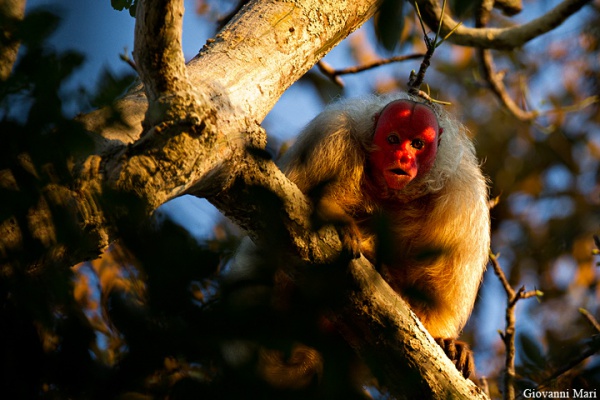Facts About Bald (Red) Uakari
The bald uakari, also known as the bald-headed uakari, is a fascinating small monkey native to the western Amazon regions of Brazil and Peru. This distinctive primate stands out with its short tail, crimson face, bald head, and long, shaggy coat. There are four recognized subspecies of the bald uakari, all of which are currently considered vulnerable to extinction.
These monkeys have a strong preference for várzea forests and other woodland areas near water. Their unique appearance features a coat that ranges in color from white to red, a bald head, and a notably short tail. The striking red face of the bald uakari is due to the lack of skin pigments and a high concentration of capillaries. Their diet mainly consists of seeds, fruits, flowers, and occasionally small animals.
Bald uakaris are arboreal, meaning they live in the trees, and they typically travel in groups of 5 to 30 individuals, covering significant distances each day. Their bright red faces are not just for show; they indicate good health and play a role in attracting mates. The breeding season for these monkeys runs from October to May, with a gestation period of about six months. They can live up to around 30 years.
The bald uakari faces significant threats from habitat loss and hunting, making conservation efforts crucial. Over the past 30 years, their population has been declining, leading to their classification as vulnerable on the IUCN Red List. Deforestation and illegal hunting pose major risks to their survival. Fortunately, organizations like the World Bank and the Wildlife Conservation Society are stepping in with programs designed to protect the Amazon and its wildlife, including the bald uakari. These efforts include conservation initiatives and patrolling to prevent illegal activities such as logging and deforestation.

 Brazil
Brazil